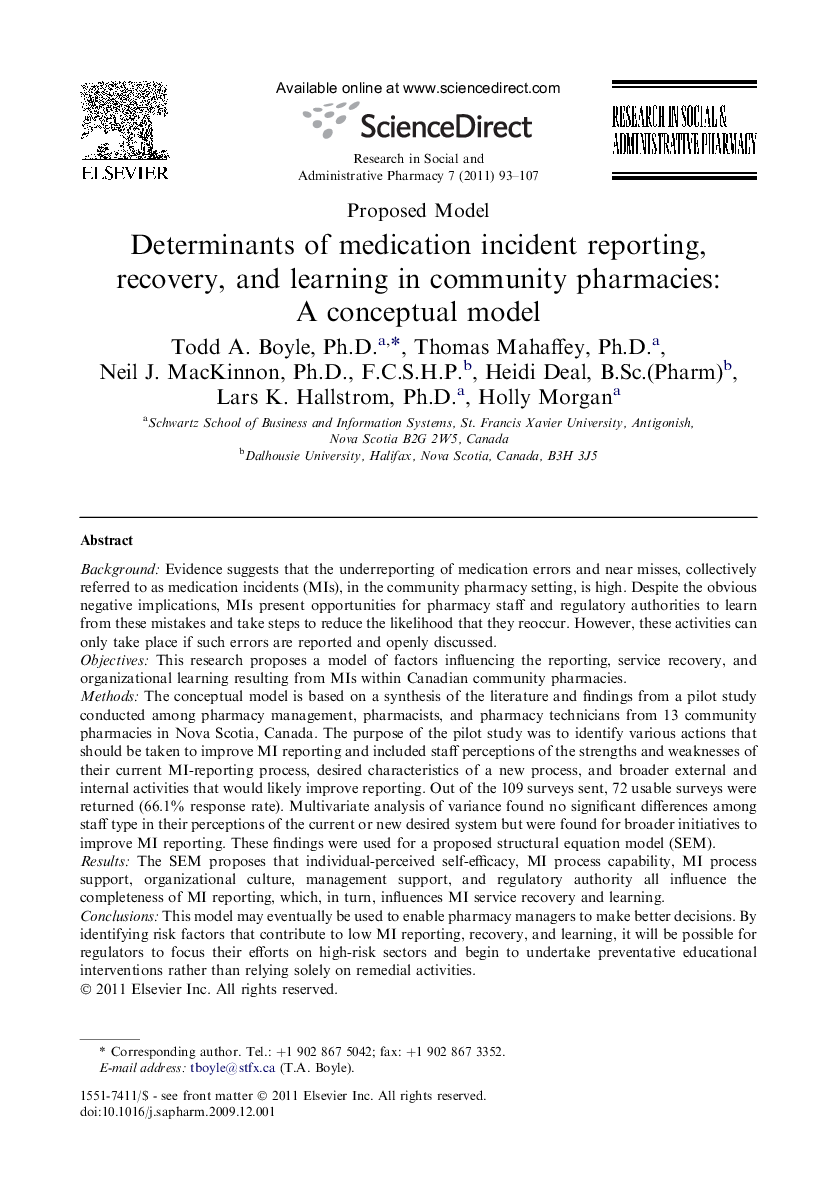| Article ID | Journal | Published Year | Pages | File Type |
|---|---|---|---|---|
| 2508669 | Research in Social and Administrative Pharmacy | 2011 | 15 Pages |
BackgroundEvidence suggests that the underreporting of medication errors and near misses, collectively referred to as medication incidents (MIs), in the community pharmacy setting, is high. Despite the obvious negative implications, MIs present opportunities for pharmacy staff and regulatory authorities to learn from these mistakes and take steps to reduce the likelihood that they reoccur. However, these activities can only take place if such errors are reported and openly discussed.ObjectivesThis research proposes a model of factors influencing the reporting, service recovery, and organizational learning resulting from MIs within Canadian community pharmacies.MethodsThe conceptual model is based on a synthesis of the literature and findings from a pilot study conducted among pharmacy management, pharmacists, and pharmacy technicians from 13 community pharmacies in Nova Scotia, Canada. The purpose of the pilot study was to identify various actions that should be taken to improve MI reporting and included staff perceptions of the strengths and weaknesses of their current MI-reporting process, desired characteristics of a new process, and broader external and internal activities that would likely improve reporting. Out of the 109 surveys sent, 72 usable surveys were returned (66.1% response rate). Multivariate analysis of variance found no significant differences among staff type in their perceptions of the current or new desired system but were found for broader initiatives to improve MI reporting. These findings were used for a proposed structural equation model (SEM).ResultsThe SEM proposes that individual-perceived self-efficacy, MI process capability, MI process support, organizational culture, management support, and regulatory authority all influence the completeness of MI reporting, which, in turn, influences MI service recovery and learning.ConclusionsThis model may eventually be used to enable pharmacy managers to make better decisions. By identifying risk factors that contribute to low MI reporting, recovery, and learning, it will be possible for regulators to focus their efforts on high-risk sectors and begin to undertake preventative educational interventions rather than relying solely on remedial activities.
